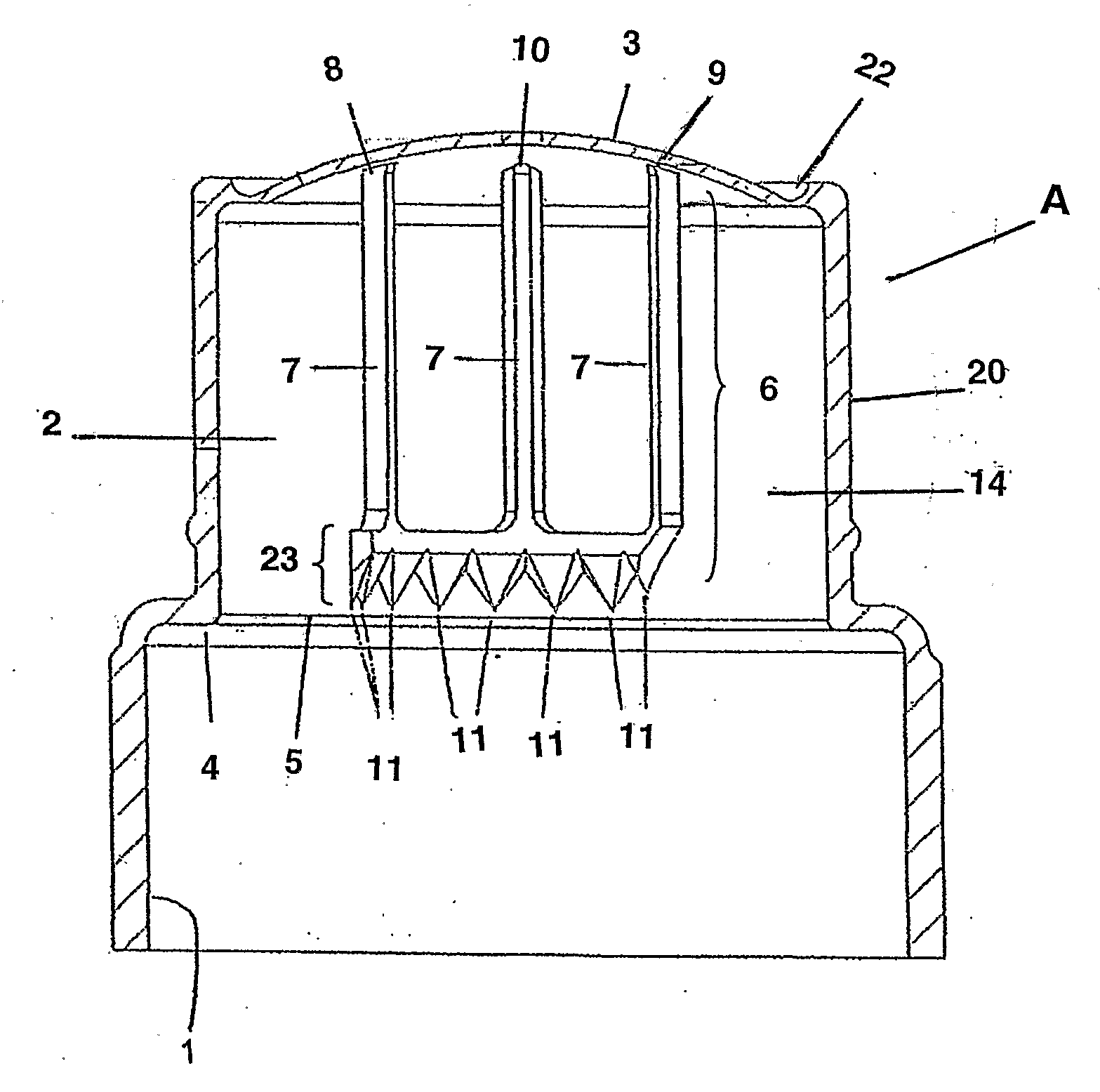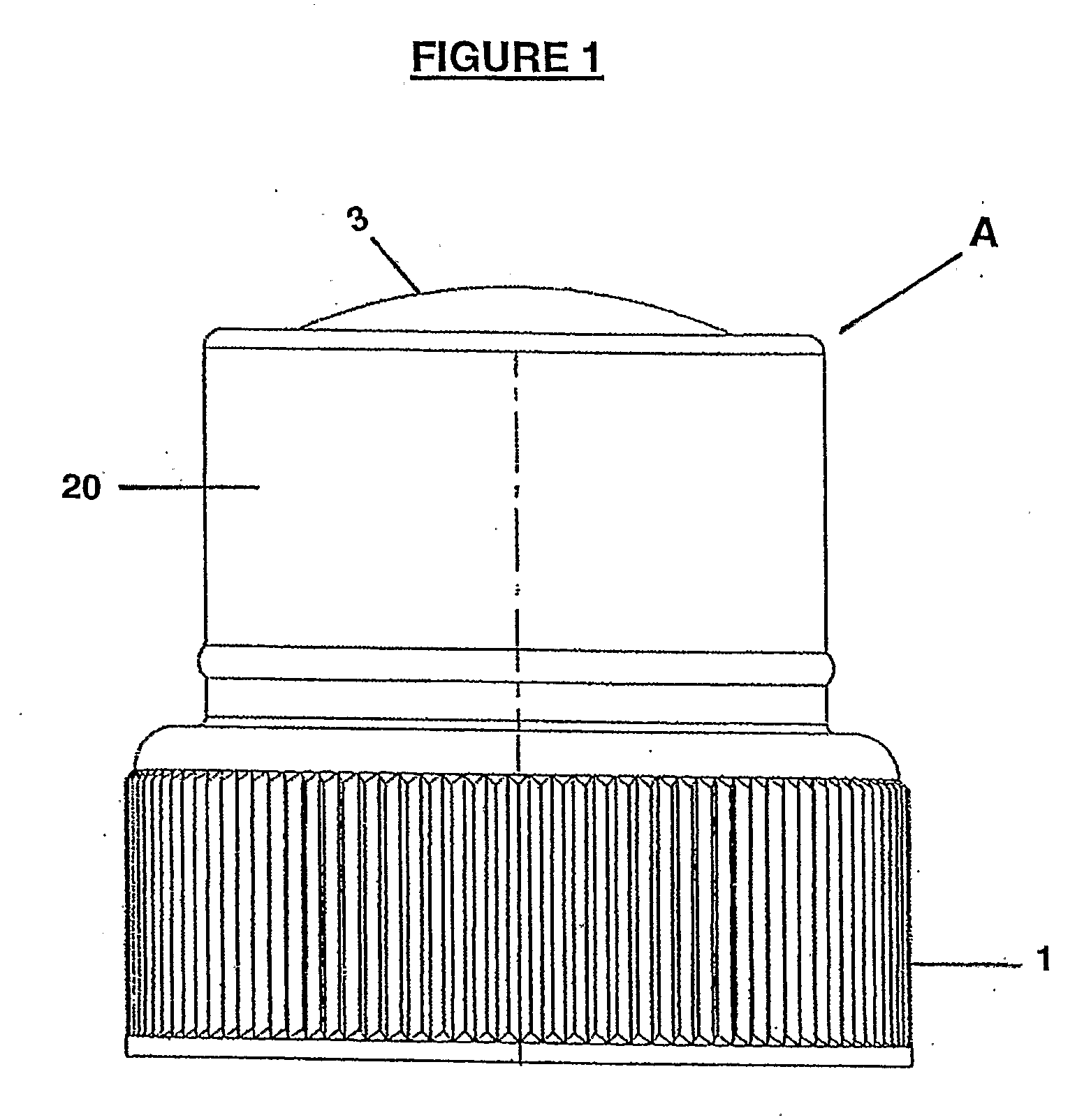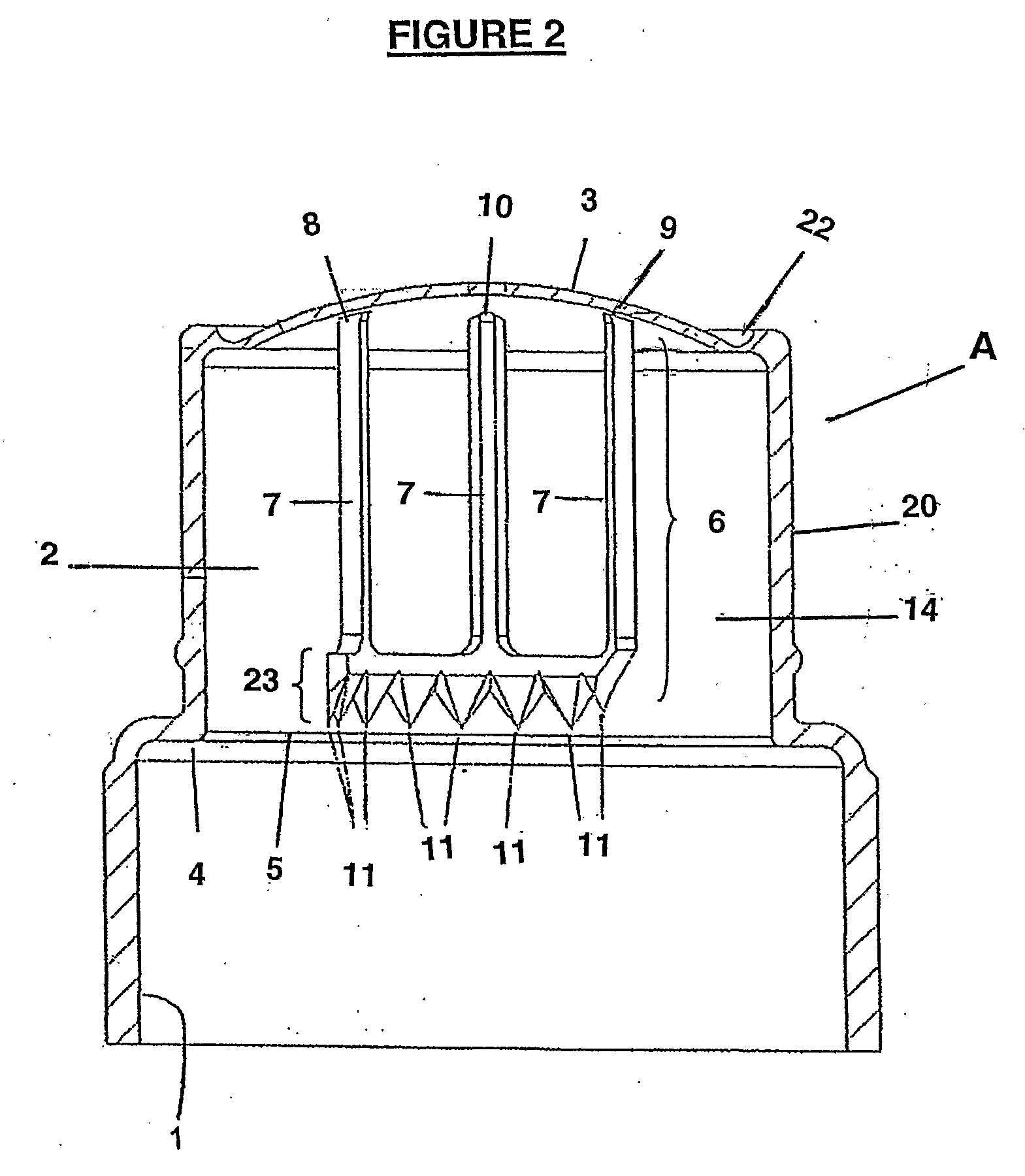There are however a number of disadvantages with current dispensing closures, such as those listed above.
These relate primarily to difficulties encountered in ensuring that
complete mixing of the substances occurs when the dispensing closure is activated.
One
disadvantage is that there may be inefficient or only partial breaking of the seal / membrane.
This can
restrict the flow of substances between the dispensing closure and the container, leading to incomplete mixing of the substances in the dispensing closure and the container.
Inefficient or incomplete mixing of the two substances is not desired as the concentration of the additive may be critical for some applications, such as in preparing
pharmaceutical solutions.
For example, dispensing devices that rupture the membrane by pushing a spike through the membrane to form a hole, such as that disclosed in JP 2004115075, may be ineffective if the hole is not large enough to ensure
free flow and mixing of the contents of the dispenser with those of the container to which it is attached in use.
Shaking or other means of forcing the contents of the dispenser to mix with the contents of the container is
time consuming and cannot guarantee
complete mixing, as, for example, some additive may still remain trapped in the dispenser.
This solution however has the
disadvantage of restricting the volume of the available space inside the dispensing closure used to store the additive compound.
This type of dispenser may not be appropriate for use with additives in the form of tablets.
This is a
disadvantage of some current dispersers where the hole is small.
This is a disadvantage of dispensers that involve the use of a spike or other
solid structure to pierce the membrane as typically the spike remains in close proximity to the hole formed in the pierced membrane after activation.
This type of piercing device typically limits the available space used to store the additive compound inside the dispensing closure.
The use of a
solid, closed structure has the added disadvantage of increasing the amount of material required to manufacture the dispenser.
This increases the cost of production and hence the cost of the closure device when sold.
It is a considerable disadvantage if the mixing requires prolonged shaking in order for a solution from the container to enter the dispenser and dissolve the tablet.
Incomplete mixing, and hence incorrect concentrations, may result if the tablet is not fully dissolved.
If the additive is in the form of a
powder or liquid then there is the potential for some of the additive to be trapped behind the piercing structure which may lead to incomplete mixing.
Again, a disadvantage with current dispensing disclosures may arise if the hole in the membrane limits the
free flow of additive (powder or otherwise) or if the internal structure of the dispenser, and in particular the structure used to make the
cut in the membrane, is such that access to the
cut portion of the membrane is limited or if additive can be trapped inside the dispenser.
As in the case of additives in the form of tablets, shaking or other mixing activity required to ensure that all the additive has entered and been mixed with the contents of the container is
time consuming and cannot be used to guarantee complete mixing.
A further significant disadvantage with most existing dispensers is that they comprise a number of distinct components.
Having the dispensing
enclosure made up of a number of component parts increases the cost of manufacture and
assembly, as a range of different products and moulds are required to manufacture the separate pieces, and slows the
production rate due to the increased
assembly required.
A further major disadvantage is that joins are often required between separate pieces.
This introduces potential sealing problems between the separate components, and may lead to an increase in breakages or faulty operation.
 Login to View More
Login to View More  Login to View More
Login to View More 


